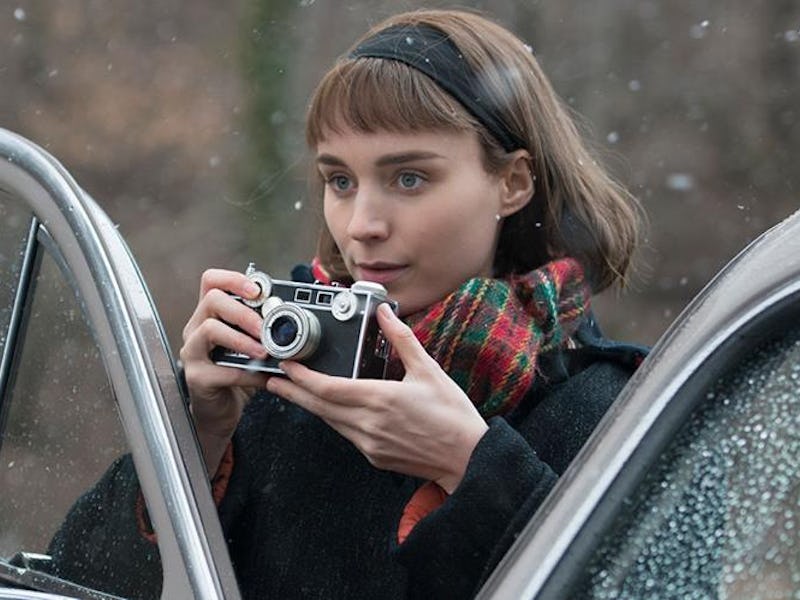Hollywood is Still Really Shitty at Creating LGBT Characters
GLAAD's annual Studio Responsibility Index finds that Hollywood still has a lot of work to do when it comes to LGBT inclusivity.

LGBT representation in film and TV is often reductive, one-dimensional, half-assed or, at its worst, offensive and dangerous. And that’s if it’s present at all, which isn’t often.
Things have gotten better in the last couple of decades, but theres still a long way to go, and GLAAD’s 2016 Studio Responsibility Index is further proof.
An annual report that surveys the high and low points of Hollywood in the last year, the SRI looks at releases from both major studios and smaller studio imprints to paint a better picture of the landscape of LGBT representation in film. This year’s report, examining films from 2015, is not very good — which should come as no surprise. Let’s take a look at what went right, what went wrong — and what we honestly never want to talk about ever again.
The Good
Lionsgate was the most inclusive studio: 33% of its films including LGBT characters. There were a few standout films that included LGBT characters in a positive and productive way. Among the standouts were the highly celebrated films Carol, Freeheld and The Danish Girl, along with Dope and Grandma.
Predictably, most of the films with positive portrayals of LGBT characters didn’t come out of the major studios, but from smaller imprints or independent distributors. As such, their theatrical releases weren’t especially wide.
Though the number of representative films in 2015 wasn’t great — only 17.5% of films included LGBT characters overall — a number of films did solid work in adding complex, layered and meaningful characters to the cultural consciousness. The awards these films received and were nominated for serves as proof that these stories need and deserve larger audiences.
The Bad
GLAAD has something called the Vito Russo test, named for the organization’s co-founder and author of The Celluloid Closet. Similar to the Bechdel Test, the Vito Russo test examines the presence and treatment of LGBT characters in film. The parameters for passing the Vito Russo test are: 1) the film must have a character who’s identifiably LGBT 2) the character must be defined by something outside of their sexuality or gender identity and 3) the character must be important to the plot, not a throwaway character included for the sake of jokes.
Of the 22 major studio releases that included an LGBT characters (out of 126 films), only 8 passed the test.
There were seven major studios included in the report, and of those seven, four were given “Adequate” ratings (Sony Columbia Pictures, Universal Pictures, Lionsgate Entertainment and 20th Century Fox) while the other three (Warner Brothers, Walt Disney Studios and Paramount Pictures) received “Failing grades, since the latter two releasing exactly zero films with LGBT characters in 2015.
In major studio films that did include LGBT characters (47 characters total), 77% of those films included gay men. Only 23% films included a lesbian character, 9% included a bisexual character and a measly 5% included a transgender character. Of the 47 LGBT characters in mainstream releases, 77% were male and 23% were female.
Racial diversity also took a hit in 2015, with only 25.5% of LGBT characters being people of color, compared to 32.1% the year before. The report reads, “Of the 47 LGBT characters counted, 34 were white (72.3%), 5 were Latino/a (10.6%), 4 were Black/African American (8.5%), and 3 were Asian/Pacific Islander (6.4%). One character was non-human (Fabian in Lionsgate’s Un Gallo con Muchos Huevos).”
The Ugly
It wasn’t just the exclusion of LGBT characters that was a problem in 2015, though — a number of films fell back on tired “gay panic” tropes and used LGBT characters as punchlines. Among the worst offenders were Kevin Hart films Get Hard and The Wedding Ringer.
Even though some films included LGBT characters, it wasn’t always in a positive light. Films like Hot Pursuit and The Duff included only a brief inclusion for the sake of a joke. This sort of “inclusion” sends a harmful message, and while some of these films do technically count in the numbers for inclusive films, that inclusion isn’t always positive and, in many cases, can be quite the opposite.
It’s clear that things need to get better not only in terms of the number of LGBT characters, but in their treatment as well.
“It is not enough for LGBT characters to simply be present; rather, these characters must be crafted thoughtfully and better reflect the full diversity of the LGBT community,” said Ellis. “Leaving LGBT people out of the picture or including them only as a punchline – keeps old prejudices alive and creates an unsafe environment, not only here in America, but around the world where most audiences see these depictions. Hollywood must do better to improve the messages they are sending.”
Though representation has improved over the last few decades, theres a long, long way to go. Heres hoping the 2017 SRI will see some marked improvements.